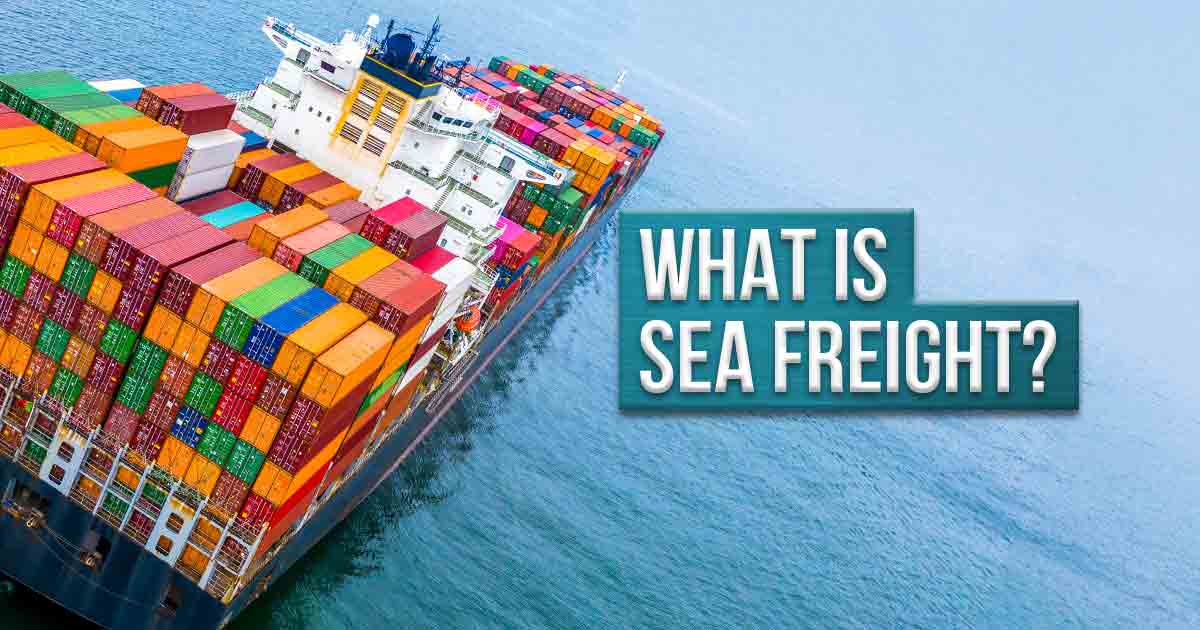
Sea freight is the most common method of shipping goods around the world, representing about 80% of global trade. This article will discuss in detail about sea freight, including its types. Deliveree offers sea freight services in the form of LCL (Less Container Load), and you can check its prices using the button below.
What Is Sea Freight?
Sea freight or ocean freight is a method of shipping goods by sea using cargo ships. Around 80% of international trade volume is transported by sea, and the percentage is even higher for most developing countries.
This sea freight method is often used to transport large quantities of goods due to its large cargo capacity and relatively lower cost compared to air freight.
The Role of Sea Freight in the Trade Sector
Sea freight plays a crucial role in both global and national trade. Here are some roles of sea freight in trade at both the global and national levels:
- Supporting the growth of global trade: Sea freight enables producers in one country to ship their goods to consumers in another country at a relatively affordable cost.
- Improving supply chain efficiency: Sea freight can be used to ship large quantities of goods from one location to another. This can help improve supply chain efficiency and reduce logistics costs.
- Expanding markets: Sea freight can be used to ship goods from one region to another within a country, which can help expand markets and increase the competitiveness of local producers.
- Creating jobs: The sea freight industry creates jobs in various sectors, such as transportation, logistics, and manufacturing.
Types of Sea Freight
There are several types of sea freight, differentiated based on the size and type of goods shipped. The common types of sea freight include:
➤ Full Container Load (FCL)
In FCL, a single shipper fills an entire container with their goods. This method is ideal for a large enough amount of goods to fill an entire container. FCL is usually faster and less risky than LCL because the goods do not need to be rearranged at the consolidation center.
➤ Less Container Load (LCL)
LCL is used when the shipped goods are not sufficient to fill a full container. Goods are shipped along with other goods from different shippers in one container. LCL is often more economical for shipping small quantities of goods but requires more complex handling and consolidation processes.
➤ Bulk Shipping
This method is used for shipping bulk goods, such as grains, coal, iron ore, and oil. These goods are transported in large quantities without specific packaging, directly in the ship’s cargo space.
➤ Break Bulk Cargo
Break bulk is a method for goods that cannot be loaded in containers or bulk, such as wood, steel, or large equipment. These goods are transported by being stacked and tied on pallets or in crates.
➤ Roll-on/Roll-off (RoRo)
RoRo is used for vehicles and goods that can move on their own or can be rolled into the ship. Examples include cars, trucks, buses, and heavy equipment.
➤ Refrigerated Shipping
For goods that require temperature control, such as fresh food products or pharmaceuticals, refrigerated containers known as ‘reefers’ are used.
➤ Tanker Shipping
Used specifically for transporting liquids, such as chemicals, crude oil, and LNG (Liquefied Natural Gas) in special tanks.
Container Types in Sea Freight
There are various types of containers designed to meet the different needs of sea freight shipping. Here are the main types of containers often used:
- Standard Container (Dry Storage Container): The most common type of container, used for shipping dry goods that do not require special temperatures. Usually available in 20-foot and 40-foot sizes.
- Flat Rack Container: Has open sides and is very suitable for large or heavy items that do not fit or are unsuitable for standard containers, such as large machines, heavy equipment, and timber.
- Open Top Container: Has a removable roof, facilitating the loading and unloading of large or heavy items from above.
- Refrigerated (Reefer) Container: For shipping goods that require temperature control, such as fresh food products, flowers, or pharmaceuticals. These containers are equipped with a cooling unit to maintain the desired temperature.
- Tank Container: This special container is used for transporting liquids, gases, or chemicals. They are typically made of corrosion-resistant materials like stainless steel.
- Ventilated Container: Equipped with ventilation to allow airflow. Suitable for transporting goods that require air circulation, such as coffee or cocoa.
- High Cube Container: Similar to standard containers but taller, providing additional volume capacity, suitable for lightweight but large items.
- Platform Container: This container is essentially a platform without sides or a roof, suitable for very large or irregularly shaped items that do not fit in other containers.
Sea Freight Shipping Process
The process of sea freight, or sea shipping, involves several key steps from start to finish. Here is a brief yet comprehensive overview of that process:
- Shipping Arrangement: Begins with planning the shipment, including choosing the type of sea freight service (such as FCL or LCL), container type, and shipping schedule. The shipper must also arrange the necessary documents such as invoices, packing lists, and export documents.
- Packaging and Pickup of Goods: Goods are securely packed for sea freight and picked up for transport to the port.
- Loading of Goods onto the Ship: Upon arrival at the port, goods are inspected, sorted, and loaded into containers. These containers are then transported onto the cargo ship.
- Sailing: The cargo ship sails from the origin port to the destination port. During the voyage, the shipping status can often be tracked.
- Unloading and Sorting at the Destination Port: After arriving at the destination port, containers are unloaded from the ship and then sorted and prepared for the next stage.
- Customs Clearance and Release of Goods: Goods go through the customs process. The shipper or import agent must submit the necessary documents for customs clearance and ensure all duties and taxes are paid.
- Final Delivery to the Recipient: After customs clearance, goods are shipped from the port to the final recipient location, which may be via truck or other modes of transportation.
- Reception and Inspection of Goods: The recipient checks the goods to ensure everything has arrived in good condition and as ordered.
Cost of Sea Freight Shipping
The cost of sea freight is influenced by various factors and can vary greatly depending on specific shipping details. Here are the main components that affect the cost of sea freight:
- Size and Weight of Goods
- Type of Service
- Distance and Shipping Route
- Port Fees and Surcharges
- Customs Fees and Taxes
- Shipping Insurance
- Additional Transportation Costs
- Fuel Price Fluctuations
- Additional Service Charges
To get an accurate cost estimate, it is important to contact a shipping company or freight broker with the specific details of your shipment. If you use Deliveree’s sea freight services, you can check our prices using the Deliveree LCL price calculator for available routes.
Read More:





 CHECK EXPEDITION PRICE
CHECK EXPEDITION PRICE


 Chat
Chat